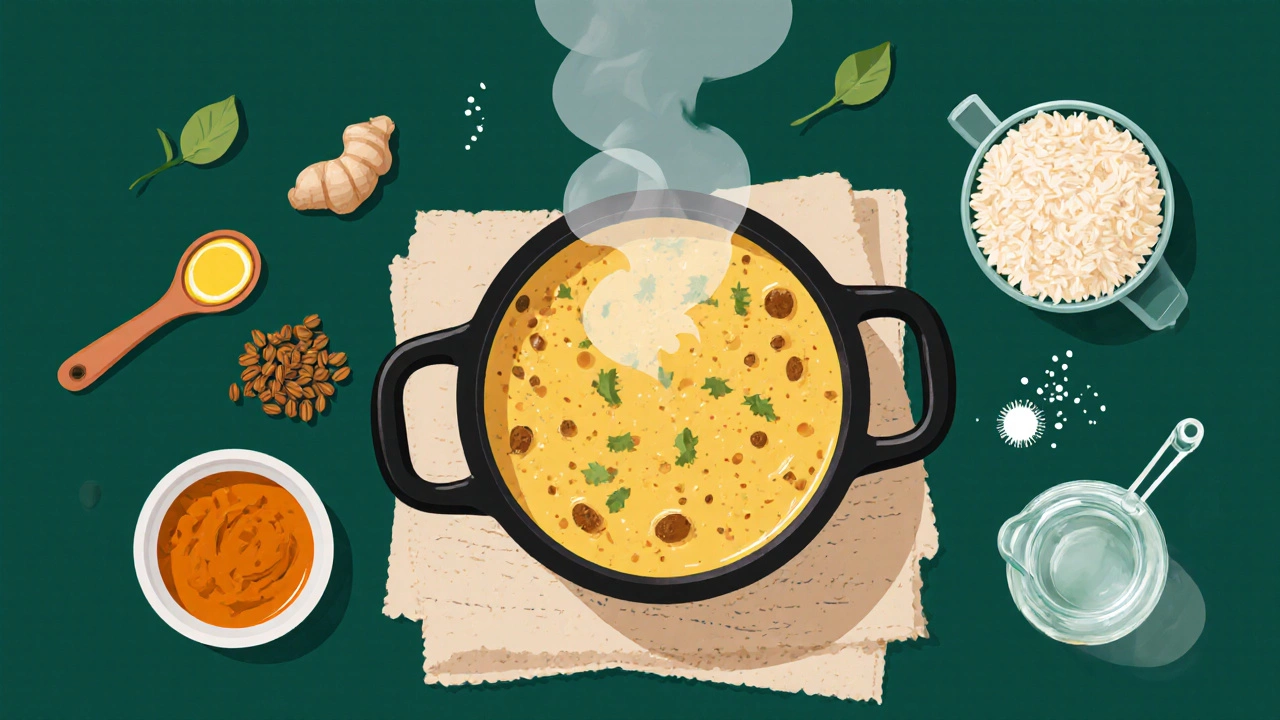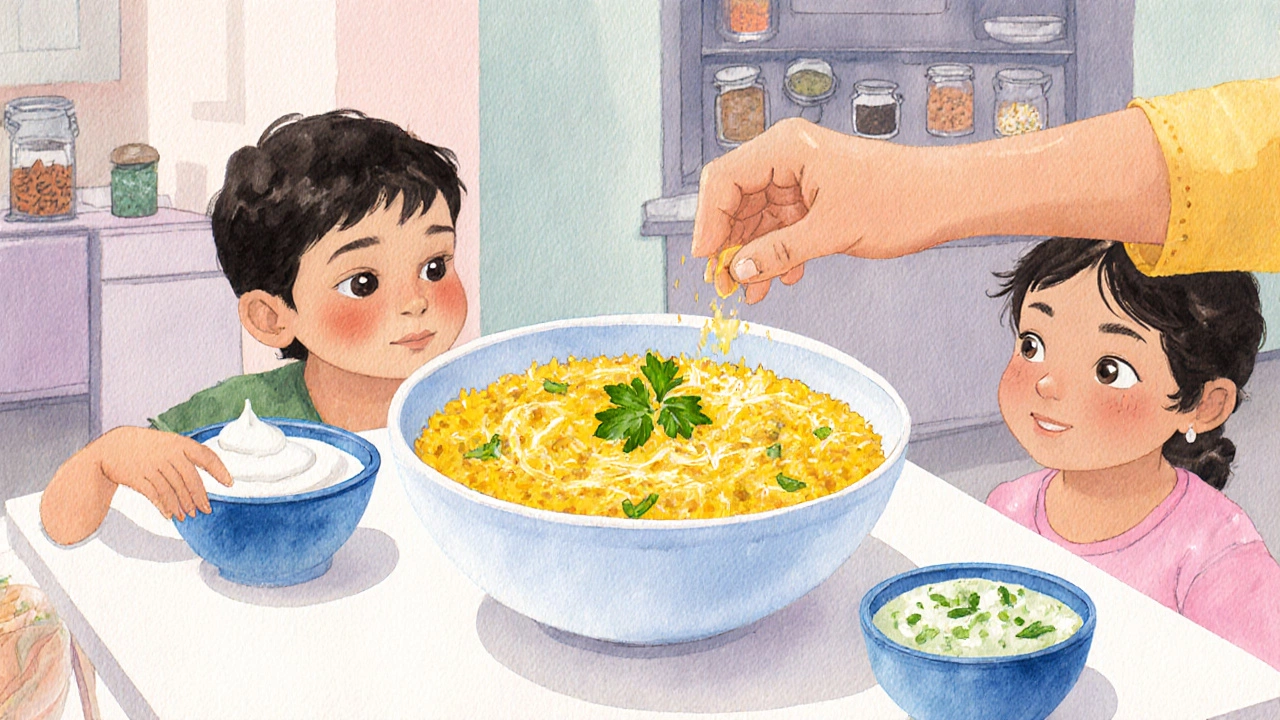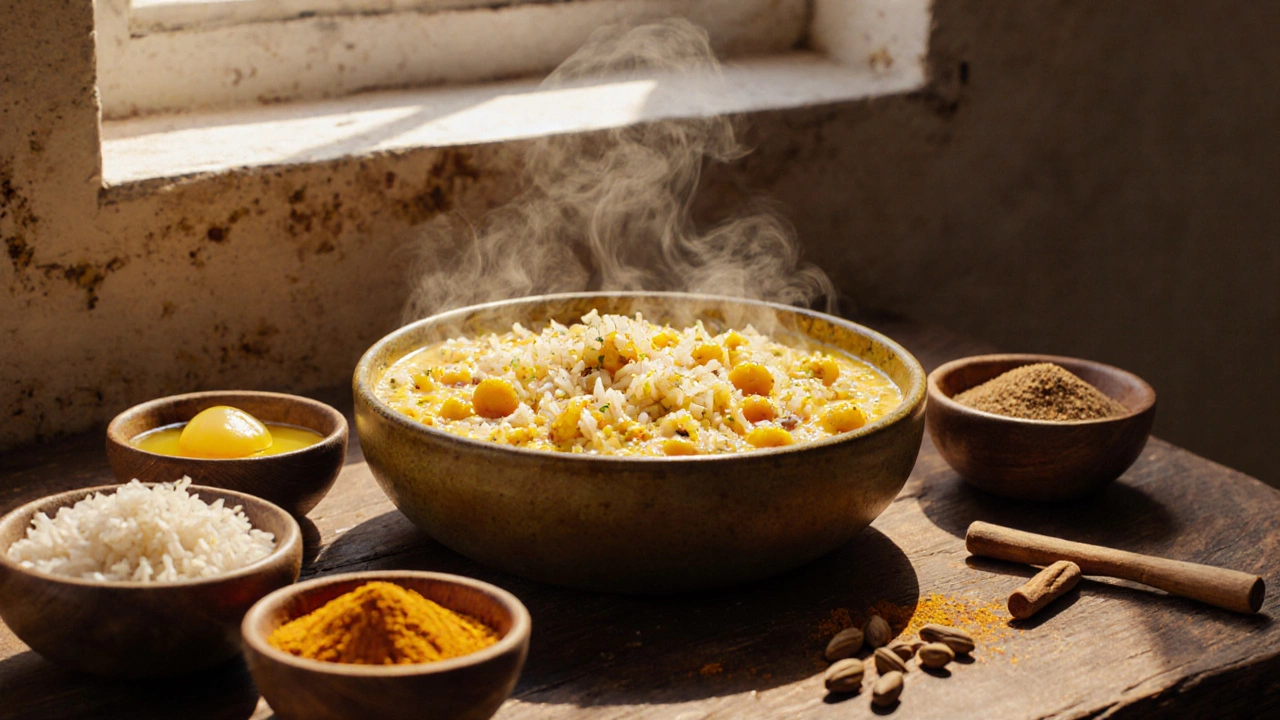20 Oct 2025
- 0 Comments
Khichdi Serving Calculator
Calculate Your Perfect Khichdi
The classic 1:½ rice-to-lentil ratio is the secret to the perfect mild khichdi texture. Enter servings below to get accurate ingredient amounts.
Adjust servings above to see your customized ingredient list.
If you’ve ever shied away from Indian food because of the reputation for blazing heat, you’re not alone. Many newbies ask, what is the most mild Indian dish that still feels authentic? The short answer is Khichdi is a comforting one‑pot rice‑and‑lentil porridge that epitomizes gentle Indian cooking. In this guide we’ll break down why Khichdi earns the “mild” badge, walk you through an easy recipe, compare it with a few other low‑heat options, and give you practical ways to tone down spice in any Indian dish.
What makes a dish “mild”?
“Mild” isn’t a vague label; it’s a combination of three measurable factors:
- Capsaicin level - the chemical that gives chilies their heat. Mild dishes use little or no fresh chilies, relying on aromatic spices instead.
- Ingredient profile - foods like dairy, sweet vegetables, and starches naturally buffer spiciness.
- Cooking technique - slow simmering and the use of whole spices can mellow flavors, while frying can intensify them.
When you look at an Indian recipe, check these three cues. The milder the dish, the fewer hot chilies, the more soothing ingredients, and the gentler the cooking method.
Khichdi: the champion of gentle Indian meals
Khichdi is a simple, one‑pot blend of rice, lentils, and mild spices that’s traditionally served as comfort food across India. Its origins trace back to ancient Ayurvedic texts, where it was praised for easy digestion and balanced nutrition.
The core ingredients are:
- Basmati rice long‑grain rice known for its fluffy texture and subtle aroma
- Dal (yellow moong dal) split yellow lentils that cook quickly and have a naturally mild flavor
- Ghee clarified butter that adds richness without harshness
- Turmeric bright yellow spice with anti‑inflammatory properties and virtually no heat
- Cumin earthy seed that imparts warmth without spiciness
Because the recipe avoids dried red chilies, black pepper, and strong chilies, the heat level stays at a 1/10 on the Scoville scale - essentially “no heat”. Yet the dish still delivers depth through aromatic spices and a hint of buttery richness.
How to make a classic Khichdi
- Gather the basics: 1 cup basmati rice, ½ cup moong dal, 2 tablespoons ghee, ½ teaspoon turmeric, ½ teaspoon cumin seeds, 1 inch ginger (optional), salt to taste, and 4 cups water or light vegetable broth.
- Rinse and soak: Rinse rice and dal together until water runs clear. Soak for 15 minutes; this speeds up cooking and yields a softer texture.
- Temper the spices: In a heavy‑bottomed pot, melt ghee over medium heat. Add cumin seeds; let them sizzle for 10 seconds until fragrant. If you like a whisper of zing, add a few thin ginger slices now.
- Combine everything: Drain the rice‑dal mixture, add to the pot, stir for a minute to coat with ghee, then pour in water or broth. Add turmeric and salt.
- Simmer: Bring to a gentle boil, then lower to a simmer. Cover and cook for 20‑25 minutes, stirring once halfway through to prevent sticking. The grains should be tender, the dal creamy, and the mixture slightly soupy.
- Finish with a drizzle: Turn off heat, let the pot sit covered for 5 minutes. Finish with an extra tablespoon of ghee for a glossy finish.
- Serve: Ladle into bowls, garnish with a pinch of fresh coriander if you want a pop of color (optional). Pair with plain yogurt or a side of cucumber raita for extra cooling.
This method yields a dish that feels hearty enough for dinner yet is light on the palate-perfect for kids, seniors, or anyone easing into Indian flavors.

Variations that keep the heat low
Khichdi is a versatile canvas. Here are three gentle twists that stay within the mild zone:
- Vegetable khichdi: Add diced carrots, peas, and zucchini during step 4. The veggies boost nutrition without adding heat.
- Paneer khichdi: Toss cubed Paneer soft Indian cottage cheese in the last five minutes of cooking. Paneer adds protein and a creamy bite.
- Sweet khichdi: Stir in a tablespoon of jaggery and a pinch of cardamom after simmering. It becomes a dessert‑style porridge, still mild but subtly sweet.
All three keep the heat rating at 1‑2/10, making them safe choices for sensitive stomachs.
Comparing Khichdi with other mild options
| Dish | Heat Level (1‑10) | Main Ingredients | Prep / Cook Time | Typical Serving |
|---|---|---|---|---|
| Khichdi | 1 | Rice, moong dal, ghee, turmeric, cumin | 15 min prep / 25 min cook | One‑bowl comfort meal |
| Navratan Korma | 2‑3 | Mixed vegetables, nuts, cream, mild spices | 20 min prep / 30 min cook | Rich gravy, served with roti or rice |
| Dahi Puri | 2 | Puffed puri, yogurt, tamarind chutney, boiled potatoes | 10 min prep / 5 min assemble | Snack or light meal |
Notice how the heat scores stay at the low end across the board. Khichdi remains the easiest to prepare and the most forgiving for beginners.

Tips for dialing down spice in any Indian recipe
- Swap fresh chilies for mild paprika. Paprika adds color without capsaicin.
- Increase dairy. Yogurt, cream, or even a splash of milk can neutralize heat.
- Use sweet vegetables. Carrots, pumpkin, and sweet potatoes balance peppery notes.
- Add acid carefully. A squeeze of lemon or a dash of tamarind can offset lingering heat, but use sparingly.
- Cook spices longer. Toasting cumin, coriander, and fennel seeds for a minute releases aromatics, letting you use less of them.
Apply these tricks to dishes like butter chicken, paneer tikka, or even a spicy dal, and you’ll end up with flavors that are vibrant but not overwhelming.
Frequently Asked Questions
Is Khichdi suitable for a gluten‑free diet?
Yes. The basic recipe uses only rice, dal, and spices, all of which are naturally gluten‑free. Just ensure any added broth or ready‑made spice mixes are labeled gluten‑free.
Can I make Khichdi in a pressure cooker?
Absolutely. Use the same ratio of rice to dal and water, lock the lid, and cook on high pressure for 4-5 minutes. Let the pressure release naturally for a softer texture.
What’s the best side dish for Khichdi?
A dollop of plain yogurt or cucumber raita adds coolness. A squeeze of lemon or a few fresh coriander leaves also brighten the bowl.
Can I store leftover Khichdi?
Yes. Refrigerate in an airtight container for up to 3 days. Reheat gently on the stove with a splash of water to restore the original consistency.
Is Khichdi considered a breakfast dish?
It can be. In many Indian homes, a light khichdi is served for early‑morning meals, especially when the stomach needs something easy to digest.
Now you’ve got the full picture: the most mild Indian dish, a step‑by‑step recipe, variations, and ways to keep any Indian cooking gentle. Give Khichdi a try tonight-your taste buds (and maybe your kids) will thank you.
